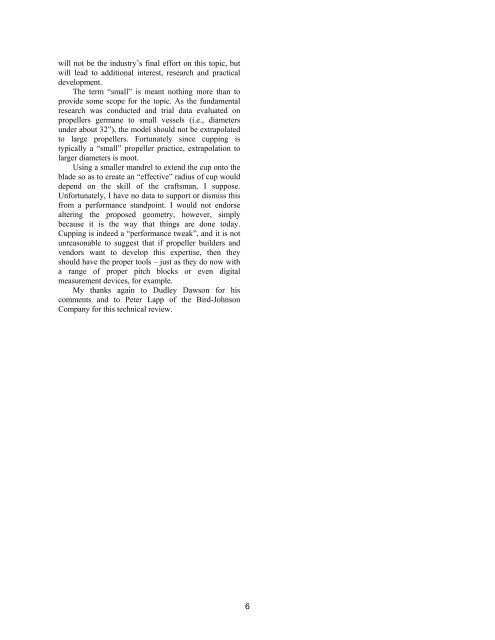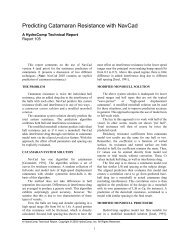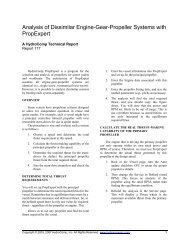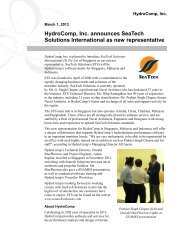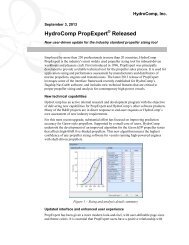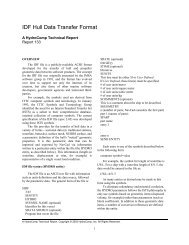Small Propeller Cup: - Hydrocomp Inc.
Small Propeller Cup: - Hydrocomp Inc.
Small Propeller Cup: - Hydrocomp Inc.
Create successful ePaper yourself
Turn your PDF publications into a flip-book with our unique Google optimized e-Paper software.
will not be the industry’s final effort on this topic, but<br />
will lead to additional interest, research and practical<br />
development.<br />
The term “small” is meant nothing more than to<br />
provide some scope for the topic. As the fundamental<br />
research was conducted and trial data evaluated on<br />
propellers germane to small vessels (i.e., diameters<br />
under about 32”), the model should not be extrapolated<br />
to large propellers. Fortunately since cupping is<br />
typically a “small” propeller practice, extrapolation to<br />
larger diameters is moot.<br />
Using a smaller mandrel to extend the cup onto the<br />
blade so as to create an “effective” radius of cup would<br />
depend on the skill of the craftsman, I suppose.<br />
Unfortunately, I have no data to support or dismiss this<br />
from a performance standpoint. I would not endorse<br />
altering the proposed geometry, however, simply<br />
because it is the way that things are done today.<br />
<strong>Cup</strong>ping is indeed a “performance tweak”, and it is not<br />
unreasonable to suggest that if propeller builders and<br />
vendors want to develop this expertise, then they<br />
should have the proper tools – just as they do now with<br />
a range of proper pitch blocks or even digital<br />
measurement devices, for example.<br />
My thanks again to Dudley Dawson for his<br />
comments and to Peter Lapp of the Bird-Johnson<br />
Company for this technical review.<br />
6


